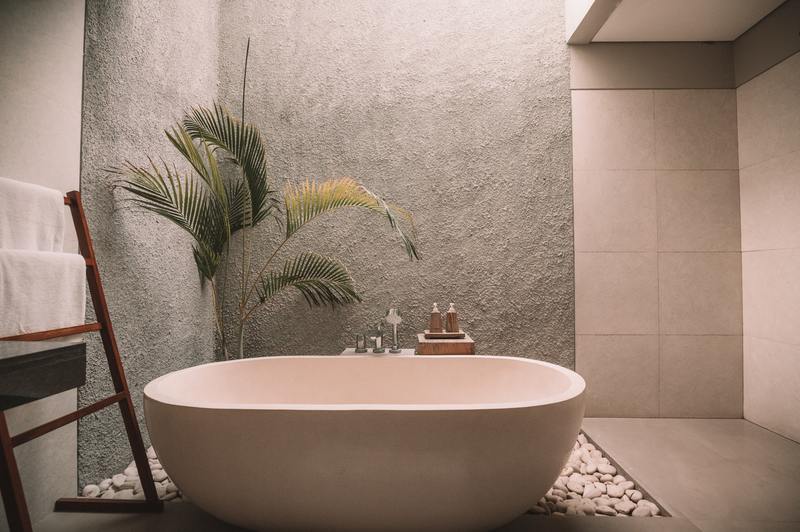Repairing the drywall in your bathroom can be done quickly with five easy steps on how to repair water damaged drywall in bathroom.
Water-damaged walls can be traced back from a simple water spray when you were bathing up to a leaking pipe. Instead of hiring a professional and paying a fee, why not repair yourself and treat yourself after. Not only did you save some money, but you also accomplished something.

Easy Steps In Repairing Water Damaged Bathroom Drywall
Repairing water-damaged bathroom drywall can be made accessible, and this is how you do it.
Step #1. Preparations and safety measures
Always consider your safety when doing any work, which is true in repairing water-damaged drywall. Water that primarily caused the damage may be harmful when it makes skin contact, making sure to wear safety equipment.
Along with preparing your safety equipment, also prepare your repair materials, everything that you might need.
Step #2. Locate the source of the water damage
Repairing the drywall is useless if the source of the damage still remains. To do this efficiently, it’s better to fix the root cause as well. Try and locate the source of damage within the damaged area.
Check if it is from a broken pipe leakage or some other source. If it’s from a broken pipe, it’s better to call your local plumber or do it yourself if you know plumbing knowledge. If it’s from water sprays, maybe it’s a good idea to get a shower curtain that could help prevent further water sprays next time.
Step #3. Remove the damaged drywall
Drywalls are made of porous material, making it easier to deteriorate when in contact with moisture in a prolonged state. Remove sagging and cracked drywall. It is better to remove them, especially to sagging drywall due to long water exposure.
When removing the damaged drywall, it is better to draw based on the stud frames of your wall. Remove the drywall part one stud away from the damaged portion.
Step #4. Replace damaged parts
Now that you have removed the damaged drywall, it’s time for replacements, but it’s not only the drywall that needs replacements. Damaged studs also require replacing. Replacing just the drywall would be in vain if the frames it’s attaching to are in poor shape.
When replacing the studs and drywall, make sure to rid the surface of molds and moisture. Molds and moisture may damage your newly replaced drywall, so it’s better to free them before you do your replacements.
After doing the necessary measures, it’s time to cut the replacements. Measure the size of the hole that needs replacement. Use the same thickness for the replacement, cut, and secure the new drywall with drywall screws.
Step #5. Finish up
Now that you have finished repairing the drywall, it is time to finish up the entire job. Fill the screws and seams with drywall mud. After application, you can also paint the drywall to match your wall accent.
When should you replace drywall when it gets wet?
Drywalls aren’t designed to absorb that much water initially, but it does not mean that replacement should be hastily done whenever your dry walls come in contact with water. Drywalls can retain moisture for at least 48 hours when left unattended.
Drywalls can withstand small amounts of water contact for a short period. Spills and sprays can’t easily damage your drywalls, given that drying techniques were implemented right away.
Water seeping in the drywall mainly causes damage to the drywall’s fiber makeup, making it soggy and easily punctured or damaged. There’s also mold growth that can happen, especially on prolonged exposure to moisture.
It takes at least 24 hrs for molds to grow both in the exterior and interior of the drywall, so it’s better to tend to wet surfaces of your drywall as early as you can spot them.
How much does it cost to fix wetted bathroom drywall?
Fixing wetted bathroom drywall can be costly, especially when hiring professionals to do the job for you. For water-damaged drywalls, not only the drywall needs repair. The leak from pipes and rotten frames needs attention as well.
Repairing the drywall involves various repairs to fully accomplish. Hiring a plumber to look for a carpenter can cause your budget problems. Not only do the professionals need pay, but as well as the materials you will use up during the process.
If you are looking for cost-effective repairs, it’s much better to learn to do the repairs yourself. Saving money requires skills, and understanding them is always beneficial for you.
Conclusion
Water-damaged drywalls in your bathroom are not that much of a problem now that you know how to repair water damaged drywall in bathroom. Identifying the source of damages and learning how to deal with them is very important.
This is very true in repairing drywall because it is not the wall itself warrants concern but also many other factors. So why not start doing these kinds of things yourself rather than relying on other professionals and expending so much money, right?
